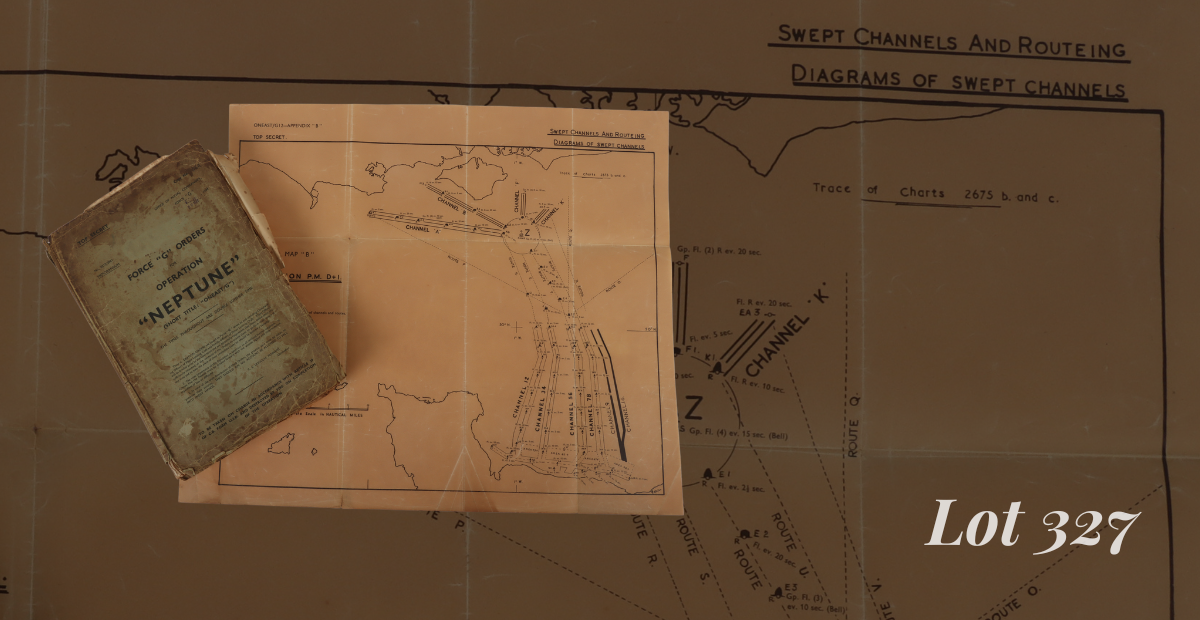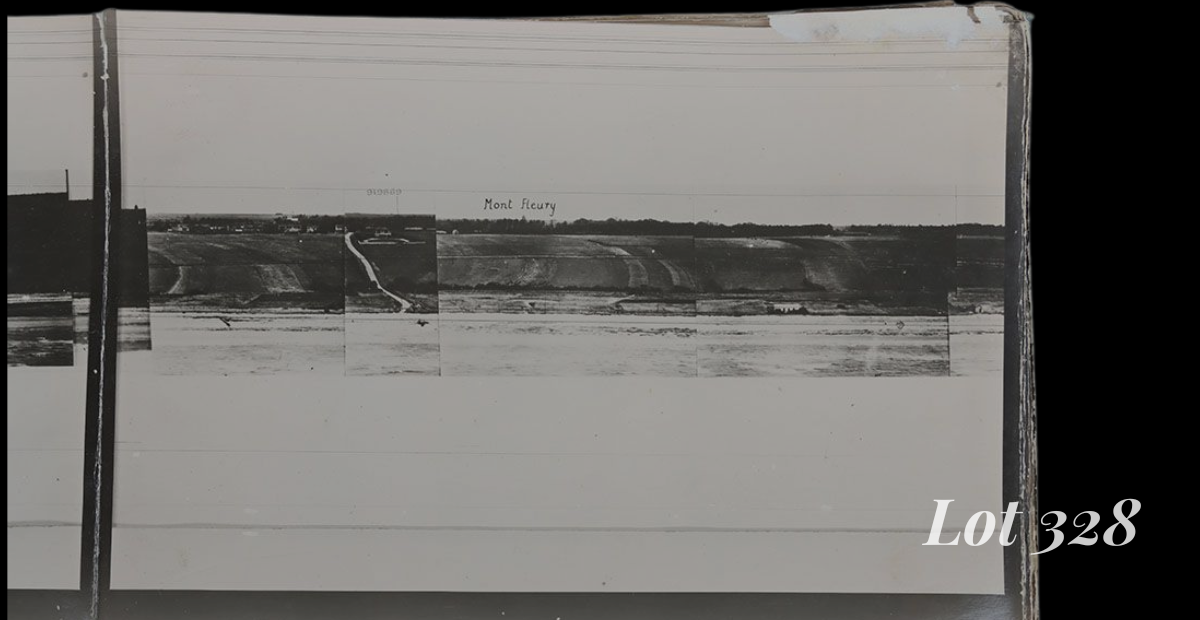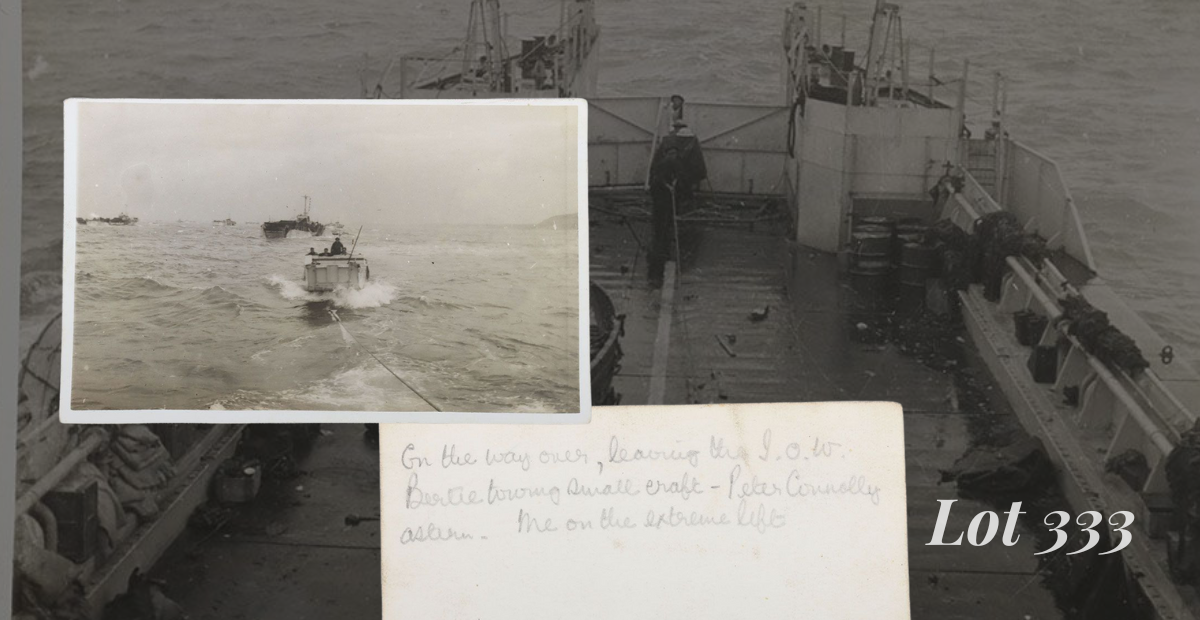Overlord: An Overview
04/07/2025 | Emma Garnham , Vince Scopes

A rare collection of D-Day items is coming up at auction on Wednesday, 9th July 2025…
A selection of items, which were formerly part of the digital museum and militaria database, the Overlord Collection, have been put onto the market through C&T Auctioneers in Kent. Lots 326- 356 sketch the story of one of the most iconic and well-known operations of the Second World War, an heroic event which turned the tides on the German occupation of Europe.
Come with us as we take a journey through the landings on Gold beach via three lots.
Gold beach - the planning of Operation Neptune…
Our journey starts, quite naturally, with the genesis and planning stages of the Allied invasion of German occupied Europe - code name Operation Overlord. Overlord was a Top Secret operation, refined over weeks of planning, preparation and tactical diversions by Allied forces.
Since the Blitzkrieg offensive of German forces in 1939 and 1940, much of Europe had been under Hitler’s power. The Western Allies rapidly began devising their response, although it would be many years in the making. Planning for an amphibious operation across the Channel arose as early as Spring 1942. Early discussions had set a deadline of 1st May for ‘D-Day’, although in reality it was only in May 1944 that the date of 5th June was settled upon. By this time a plan was devised to land troops on the beaches of Normandy, and from there to launch the liberation of German-occupied Europe. This naval contingent of Operation Overlord was named Operation Neptune.
Due to the ambition of these plans, the details of Operation Neptune were Top Secret, known only to the select and necessary few. Many of the documents and records of this planning stage were intentionally destroyed, so it is a great thrill that one survivor has found its way into auction. Lot 327 is the exceptional Force ‘G’ Orders, TOP SECRET D-Day Naval Orders and Overlay Maps relating to Gold Beach. The cover is tantalisingly marked that, after use, the document must be ‘destroyed by fire’. It is a fully comprehensive document, and each page a wealth of information. Its contents includes every single ship of war and its duty, what flotilla they belonged to, where it would be sailing from and what their loads would be, and many more operational details besides. In total, it is a narrative of a major naval assault, and a narrative which should no longer even exist.

D-Day - from the boats to the beaches…
As May turned to June, increasing numbers of people were brought in on the secret, namely the soldiers who had to bring it to fruition.
By this point in the war, many of the soldiers who were to take part in the D-Day landings had seen prior action, including the 50th (Northumbrian) Infantry Division who landed on Gold beach. Throughout the conflict of 1940-1944, the 50th Division has served in multiple significant European conflicts, seeing action in North Africa and Sicily. Exhausted by years of previous action, this veteran division, though deserving of a rest, could boast the experience necessary for a major assault on German occupied Europe.
Despite their comparative experience, the soldiers being sent to Gold beach were charging into the unknown. Eye-witness accounts of the day report the rumours which swirled around the situation they would be arriving in. Months of careful preparation could not detract from the fact that these veteran forces were once again pushing back German occupation in Europe, on a landscape they did not know and encountering an enemy they could not fully anticipate.
To help the soldiers, silhouette books had been commissioned to sketch the outline of the beach. Once such example is seen in lot 328, which captures the coast of Gold beach. This book helped with recognition, depicting significant locations such as the German gun battery at Mont Fleury, which the 50th Division later seized.

‘I must say that before the Invasion took place, knowing I was going on it, I felt very apprehensive but I do not think afraid. I think most of those who took part felt the same.’
- L/Cpl. Stanley Garnham, D-Day veteran of the 50th Northumbrian Division
As the scheduled day approached, commanders of allied forces continued to adapt their plans. A poor weather report on the 4th June resulted in a last minute, 24-hour delay of the landings, pushing them back to the 6th June. So, on the night of the 5th, various landing craft launched from Southampton into the still stormy seas, Normandy-bound.
As they approached H-hour, these soldiers overcame seasickness and rough seas to execute a huge naval operation. For all their experience and now-heroic legacy, on the morning of the 6th June, these men watched the French coastline emerge from the sea mist feeling ‘rather apprehensive of what was ahead and the unknown’.
An awareness of the historical significance of the coming day was captured by astute soldiers who took photographs from their crafts on the morning of the 6th, images which make up lot 333. Taken from an LCT deck, the photos depict the approach to Gold Beach, with the LCTs and LCIs being towed towards Normandy shores. Annotations on the reverse explain the scenes, and identify the individuals known to the photographer, giving the photographs a sense of the human and the personal.

After D-Day
Ultimately a success, the actions of soldiers and commanders on the 6th June 1944 have been celebrated as a watershed moment in the liberation of German occupied Europe. From the famous names, such as the tenacious Stan Hollis who earned his VC on the day, to the stories passed down through families, D-Day inhabits a distinct position in both public memory and historical record.
While the events of 6th June 1944 undeniably marked a turn in the tide of German occupation of Europe, the war was by no means won. It was almost another full year until the allied victory on 8th May 1945. From their position on the Normandy beaches, allied forces struck out, taking Caen and moving across Northern France to the Low Countries, savouring victories and suffering defeats in the process. In November 1944 the 50th Infantry Division were repatriated as a reserve division, but fighting in mainland Europe continued.
The events of D-Day have echoed across 81 years, as a beacon of courage, personal honour and national pride. The significance of this operation and the heroism of those who served has inspired generations since.
C&T Auctioneers is honoured to be offering a fine selection of D-Day related items in the Fine Arms, Armour & Militaria auction on Wednesday 9th and Thursday 10th July 2025, commencing at 10:30 BST. The D-Day related items are lots 326-356, which will be going under the hammer on Wednesday 9th.
Learn more...
Many of the items listed in this auction are courtesy of the Overlord Collection. If you’re interested in learning more about the Overlord Collection, view our recent Collectors Showcase feature on the C&T YouTube channel, where our specialist Matthew spoke with the curator about his current collection. You can also catch our specialist, Vince, talking through some more of the D-Day related lots - check out @candtauctioneers on Youtube.

